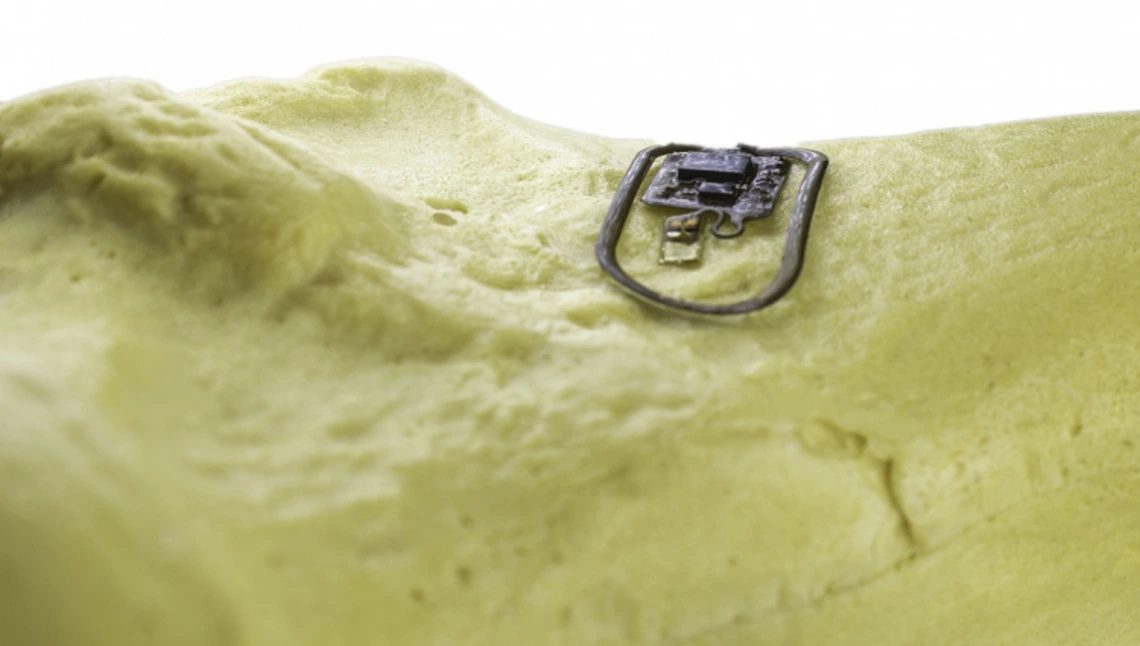Gutruf Develops 'Computer on the Bone'

BME assistant professor and Craig M. Berge Faculty Fellow Philipp Gutruf is leading a team of researchers that is developing an ultra-thin wireless device that grows on the surface of bone. Called osseosurface electronics, these devices could someday help physicians monitor bone health and healing over long periods.
"Being able to monitor the health of the musculoskeletal system is super important," said Gutruf, who is also a member of the university's BIO5 Institute. "With this interface, you basically have a computer on the bone. This technology platform allows us to create investigative tools for scientists to discover how the musculoskeletal system works and to use the information gathered to benefit recovery and therapy."
The devices are described in a new paper published in Nature Communications. The ultrathin electronic platform enables direct lamination onto the bone, which provides the opportunity to attach devices permanently to gather information on bone health long term, the paper states. Because of cell turnover, any glue will exhibit limited lifetime and continuously degrading biointerface quality. A solution to this problem is to directly grow osseosurface devices to the bone using calcium phosphate ceramic particles.
"The bone basically thinks the device is part of it, and grows to the sensor itself," Gutruf said. "This allows it to form a permanent bond to the bone and take measurements over long periods of time."
